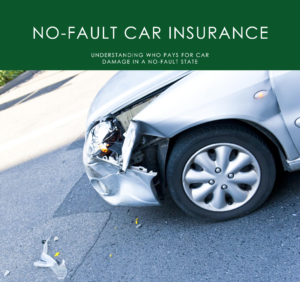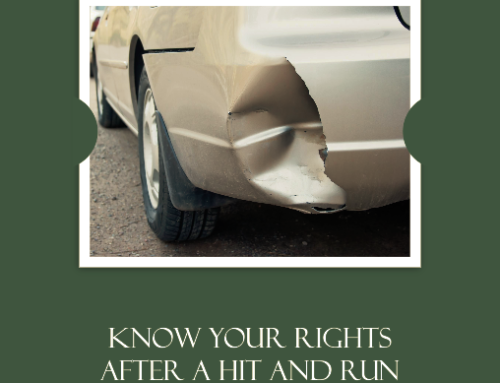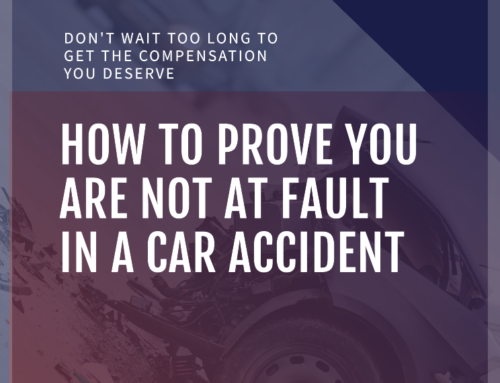
Understanding the specific implications of car accidents in a no-fault state can be overwhelming for many, especially in the aftermath of a car accident that carries emotional upheaval and financial uncertainties alongside. If you drive in a no-fault state, you should be aware of how the laws work when it comes to paying for car damages, medical expenses, and other related costs. This article aims to shed light on the intertwining dynamics of insurance companies, legalities, and personal rights under the concept of no-fault states. It will take you through different scenarios – involving two or more vehicles, property damage, possibility of emotional distress, and the potential legal options you have in a no-fault state.
- Understanding No-Fault State
- Role of No-Fault Insurance
- Role of No-Fault Insurance
- Handling Medical Costs with No-Fault Insurance Cover
- Allocating the Cost of Vehicle Repairs
- Scenarios Including Two or More Vehicles
- Role of Personal Injury Protection (PIP) Insurance
- Impact on Insurance Premiums
- Dealing with Property Damage in a No-Fault State
- Emotional Distress and No-Fault Insurance
- Legal Options in a No-Fault State
Understanding No-Fault State
The no-fault state concept is rooted in certain jurisdictions’ insurance policy frameworks. Each driver in a no-fault state is required to carry Personal Injury Protection (PIP) insurance. The essence of a no-fault state is insurance coverage which ensures that, regardless of who caused the accident, the insurance provider will cover the damages.
In a no-fault state, each driver’s insurance pays for the sustainment of their insured regardless of fault. It’s designed to limit liability disputes and quicken the claims process. Interestingly; not all states are “no-fault states.” Only about a dozen follow these no-fault laws, while others operate under the traditional tort insurance system.
The primary advantage of a no-fault state is the expeditious settlement and claim process. The legal process entailing determining fault and consequential assignment of financial responsibility can be lengthy and arduous. The claims process is streamlined in a no-fault state since insurance laws predetermine financial obligations.
Role of No-Fault Insurance
When a car accident occurs in a no-fault state, your insurance company becomes responsible for certain damages, regardless of who is at fault. This is popularly known as a no-fault or Personal Injury Protection (PIP) claim. It ensures speedy processing and settlement of claims as finger-pointing to determine the liable party is avoided.
No-fault insurance coverage includes but isn’t limited to medical expenses, rehabilitation costs, lost income, funeral expenses, and essential services. Even though your no-fault insurance pays for these services regardless of fault, it’s important to note that it does not cover vehicle and property damage. The at-fault driver’s insurance company usually covers these damages.
However, it’s worth noting that no-fault insurance rules vary widely. While some states offer PIP coverage as an added layer of protection, others require it by law. Furthermore, your PIP coverage limit, the maximum amount your policy will pay after a covered accident, varies by state and by your policy.
Handling Medical Costs with No-Fault Insurance Cover
One critical coverage area of no-fault insurance is the handling of medical costs. No-fault insurance typically covers your medical expenses, thereby providing relief to accident victims. This policy element is crucial as accident-related medical expenses can quickly escalate and pose significant financial strain.
The no-fault insurance coverage handles your medical bills by invoking your Personal Injury Protection claim. This element of no-fault insurance is crucial in ensuring a quick return to health without the financial burden of handling medical expenses. However, there might be limits to the medical costs coverage based on your insurance policy and state insurance laws.
Even though no-fault insurance normally covers medical costs, the at-fault driver’s bodily injury liability insurance might be required to pay if your costs exceed your coverage limit. However, the injured party first exhausts their insurance coverage before seeking compensation from the at-fault driver’s insurance.
Allocating the Cost of Vehicle Repairs
The case is handled differently than personal injury claims regarding vehicle repairs or total vehicle damage in a no-fault state. The owner’s collision coverage typically covers the cost of vehicle repairs. However, if the other driver is at fault and you don’t carry collision coverage, you can file a property damage claim against the other driver’s insurance.
The role of the insurance company in these situations is pivotal. While your collision coverage or the at-fault driver’s property damage liability insurance covers your vehicle damage, your resilience largely depends on your insurance policy’s terms and conditions. This is why reviewing and comprehending your auto insurance policy’s terms thoroughly is essential – so you’re not caught unprepared.
In some cases, making a claim for vehicle repair costs against the at-fault driver’s insurance, also known as a mini-tort claim, can be lengthy. This is often the case when there’s a dispute over who caused the accident. In such situations, the decision could be delayed until a ruling is made and the at-fault party is identified.
Scenarios Including Two or More Vehicles
In accidents involving multiple vehicles, the no-fault insurance laws come into play with equal force. Each driver’s insurance company is responsible for their insured’s car damage and medical bills up to the policy limits, irrespective of who was at fault. Identifying an at-fault driver might be complex and time-consuming in certain circumstances, such as in a chain reaction collision.
In a collision between multiple vehicles, each driver’s personal injury protection (PIP) insurance covers the insured’s medical bills and lost wages, irrespective of fault. Therefore, when more than two cars are involved, each driver would claim with their insurance company. This again highlights the benefit of no-fault state laws that expedite claim settlements.
The pure comparative negligence rule applies in certain no-fault states. Under this rule, a particular driver can recover damages in direct proportion to their degree of responsibility in causing the accident as determined by the insurance adjuster during the claims process. However, the rule may not apply if the driver is deemed to violate a traffic law during the accident.
Role of Personal Injury Protection (PIP) Insurance
Personal Injury Protection (PIP) Insurance is crucial in no-fault insurance laws. It covers critical costs such as medical expenses, lost wages, and sometimes even funeral expenses. Depending on the state and your policy, PIP may also cover additional costs like child care expenses if you cannot care for them due to injuries from the accident.
Most states that implement no-fault insurance laws require drivers to carry PIP insurance. Personal Injury Protection would ensure that your medical costs are covered in case of an accident independent of who was at fault. Importantly, PIP ensures that personal injury lawsuits only occur in serious injuries where medical costs exceed the PIP policy limits.
In essence, PIP can provide a financial cushion while recovery is underway. PIP coverage pays irrespective of fault, thus helping manage the often high medical costs arising from car accidents. The function of PIP emphasizes the convenience of settling issues quickly and without going through lengthy court proceedings or liability disputes.
Impact on Insurance Premiums
Insurance laws in no-fault states can significantly impact your insurance premiums. Insurers consider the financial risk associated with comprehensive coverage in no-fault states, which is often reflected in premium costs. Unlike in an at-fault state—where the at-fault driver’s insurance pays for medical costs and car repairs—in a no-fault state, each party’s insurance company must cover their client’s claims, which can lead to more insurance payouts, thus affecting the overall premium.
Therefore, it isn’t unusual to notice slightly higher insurance premiums in no-fault states than in at-fault states. The higher premiums factor in the potential risk insurance companies bear by offering no-fault insurance coverage. However, the exact impact of no-fault laws on insurance premiums will also be influenced by other factors, including your policy’s coverage limits, your driving record, and the specifics of your insurance carrier’s policies.
However, the trade-off is in the form of a smoother, quicker, and less stressful claims process. The speed of claim settlement and avoiding potential legal battles over determining fault can outweigh the costs of higher premiums. Here, efficient customer service by your chosen insurance company can make a difference in your post-accident experience.
Dealing with Property Damage in a No-Fault State
In no-fault states, contrary to the PIP policy that covers personal injury regardless of who’s at fault, property damage is typically covered by the at-fault party’s insurer. It implies that their insurance would generally cover the vehicle repairs if another driver hits them in a no-fault state. Your insurance company may also cover damages if you have collision coverage.
A property damage claim may include payment for repairing or replacing damaged items. This is where the at-fault driver’s Property Damage Liability coverage comes into the scene. It covers the costs to repair damages to another person’s property, effectively paying the costs linked to the damage caused by the insured to the property of others.
However, it’s important to remember that no-fault laws can be complex and change from one state to another. For instance, in certain no-fault states with limited no-fault laws, if you suffer larger property damages, you can file a lawsuit against the at-fault driver instead of simply relying on your policy or their Property Damage Liability insurance.
Emotional Distress and No-Fault Insurance
In certain situations, emotional distress, typically classified as non-economic damage, can also be covered under no-fault insurance. However, this type of coverage is not always standard and might hinge heavily on state-specific rules and specific policy terms. It’s crucial to understand your insurance policy’s scope and limits and consult with an insurance agent when in doubt.
While lawsuits for pain and suffering are typically minimized in no-fault states, there are exceptions known as injury thresholds. Suppose an accident victim’s injuries, including significant emotional distress, are severe enough to meet these thresholds. In that case, a claim can be made against the at-fault driver’s insurance policy for additional compensation. Therefore, exceptions in no-fault laws provide remedy for severe emotional trauma post-accidents.
Nevertheless, recovering compensation for emotional distress could potentially be challenging. It often requires convincing proof that your distress is directly tied to the accident. Nevertheless, under the right circumstances and with solid evidence, it is possible to pursue and obtain compensation for emotional distress even within the constraints of no-fault state laws.
Legal Options in a No-Fault State
In no-fault states, there are legal nuances that allow for flexibility in unique circumstances. An injured party can sue the at-fault driver if their loss due to medical costs or tangible property exceeds a certain ‘threshold’. Meeting this threshold allows an exception to the no-fault rules, allowing the injured party to seek more substantial compensation via a personal injury lawsuit.
If your injuries are severe or permanent or you have incurred substantial medical expenses, most no-fault states will allow you to step outside the no-fault system and file a lawsuit. In such lawsuits, you can demand compensation for losses not covered by your PIP policy, such as considerable pain and suffering or other non-economic damages.
However, this course usually requires legal help from an experienced lawyer. They would consider the merits of your case, guide you through the complex legal process, and ensure your rights are adequately represented. Furthermore, they can advise on the possibility of recovering damages from the at-fault driver’s insurer under the existing insurance laws in your state.
Conclusion
Navigating the complexities of car accidents and associated insurance claims in a no-fault state can indeed be daunting. The laws differ significantly from those in at-fault states, and it is crucial to grasp the mechanics of no-fault laws to manage the situation successfully. This article was designed to give you a deep understanding of who pays for car damage in a no-fault state, how your insurance company becomes involved, and what happens in a variety of different scenarios. Although each situation is unique and may warrant specialized attention, being prepared and understanding the broad principles of no-fault laws is the first step towards calming the storm after a car accident. For any further guidance, always consider reaching out to a professional for a free consultation or assistance.






Leave A Comment